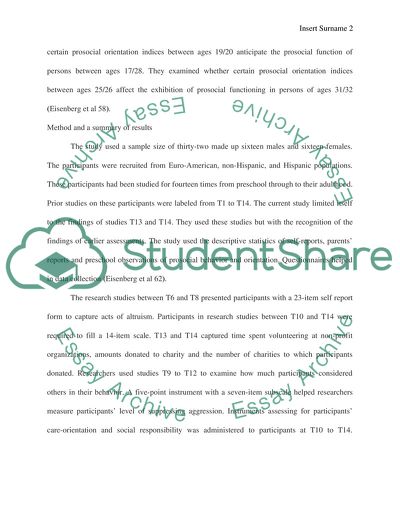The Development of Prosocial Moral Reasoning and a Prosocial Orientati Article. https://studentshare.org/social-science/1814401-the-development-of-prosocial-moral-reasoning-and-a-prosocial-orientation-in-young-adulthood-concurrent-and-longitudinal-correlates
The Development of Prosocial Moral Reasoning and a Prosocial Orientati Article. https://studentshare.org/social-science/1814401-the-development-of-prosocial-moral-reasoning-and-a-prosocial-orientation-in-young-adulthood-concurrent-and-longitudinal-correlates.


